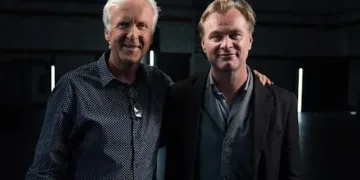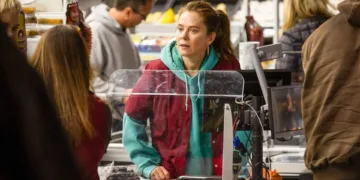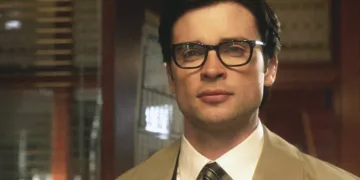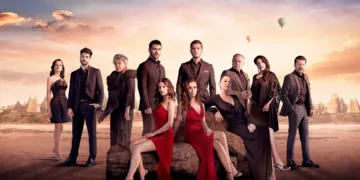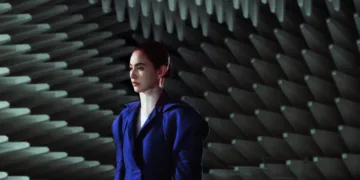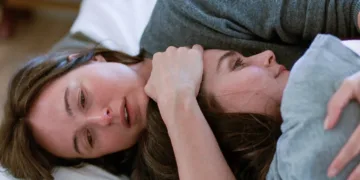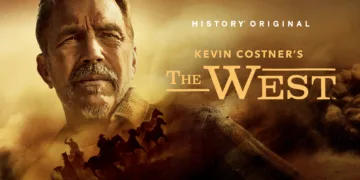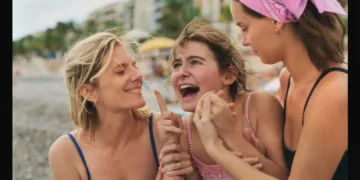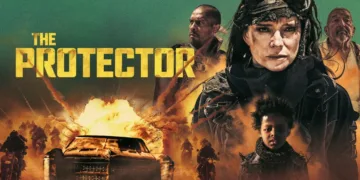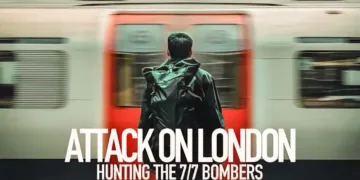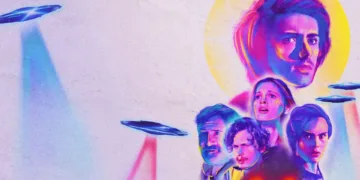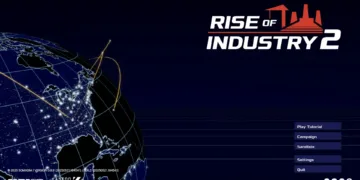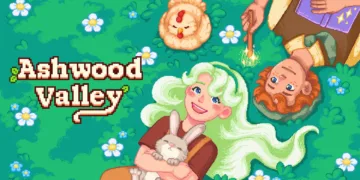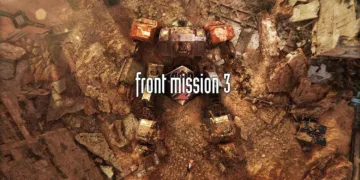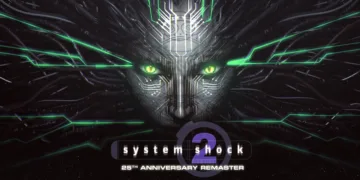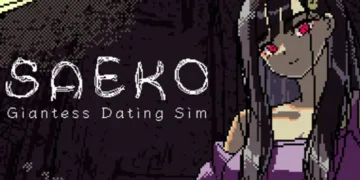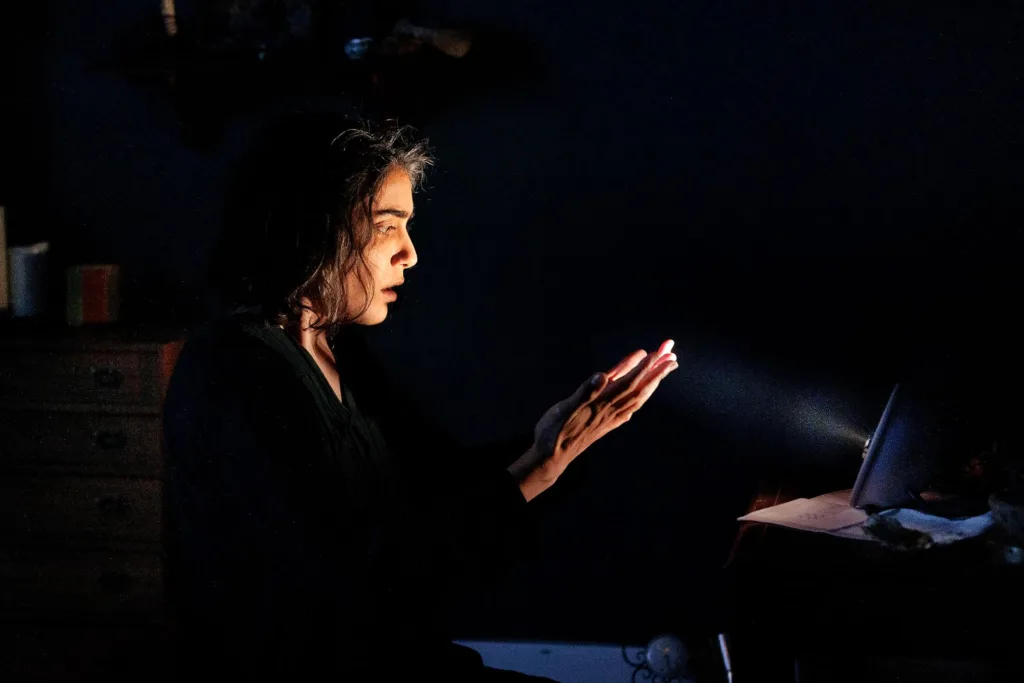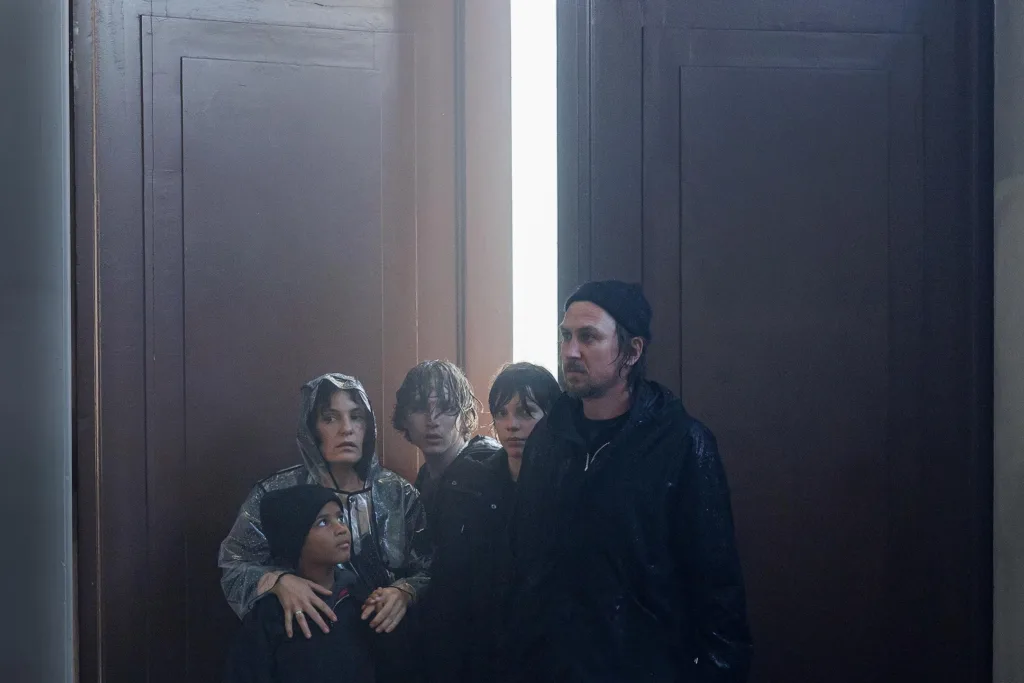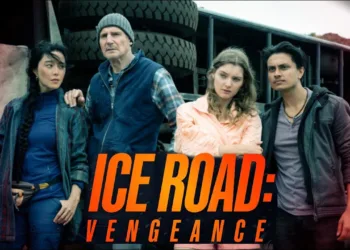Tom Tykwer, whose cinematic resume includes innovative projects that once spun the dizzying thrill of “Run Lola Run” and the intense chronicles of “Babylon Berlin,” reenters the German-language scene with a film that mirrors the modern malaise of society. Here, his return is marked by a refreshing, if occasionally puzzling, pursuit of intellectual questions. Tykwer’s work has often sparked conversation about the interplay between kinetic storytelling and the weight of historical memory—a curiosity that finds new expression in this film.
Berlin itself is cast not merely as a backdrop but as a character of its own; the city’s relentless drizzle and angular urban spaces provoke thoughts on isolation and collective fatigue. In this setting, the narrative orbits around a family unraveling under the strain of internal conflicts and unspoken disappointments—a microcosm of a society grappling with its past and present. A figure arrives unexpectedly, an emblematic agent of change whose presence ripples through the stifled air of suburban stagnation, urging the family to confront their modern disarray.
The film mixes dramatic realism with sporadic bursts of speculative imagery and musical interludes (a nod to cinema’s capacity to reinvent itself even in the most somber moments). Its style oscillates between methodical compositions and wild, spontaneous sequences, a deliberate choice that mirrors the unpredictable pulse of contemporary life. A few moments may feel like a throw of the dice, yet there is a calculated curiosity in Tykwer’s approach—a philosophy that seeks to question modern existence without delivering tidy answers.
Interlacing Destinies: A Critical Examination of Narrative Structure
The film opens with a montage that feels both orchestrated and organic—a calculated swirl of images that introduces us to key players almost simultaneously. An accident, a death, and a frantic departure in one breath set the tone for a narrative where chaos and order collide. This sequence (a sort of visual Rorschach test) immediately forces us to question whether fate is the architect of these events or merely a convenient plot contrivance.
Within this framework, the lives of the Engels family and Farrah converge in a manner that recalls historical crossroads—moments when disparate forces intersected to reshape societies (one might recall the unexpected twists in post-war European narratives).
Domestic strife, personal crises, and professional mishaps are interwoven with a subtle precision. The family’s internal discord mirrors broader societal anxieties about change and continuity, almost as if the microcosm of their lives reflects the macrocosm of cultural and political uncertainty.
Key turning points in the plot (most notably, the unraveling of Farrah’s enigmatic past and the curious role of a strobing LED device) serve as catalysts for transformation. These revelations spark a series of events that, though seemingly orchestrated for dramatic effect, invite a more philosophical inquiry into the nature of revelation and truth.
At moments, the narrative’s logic oscillates between clear progression and the whimsical freedom of flashbacks and surreal interludes—a characteristic that, while sometimes exasperating, offers a unique commentary on the unpredictability of human experience.
The pacing, marked by abrupt shifts and leisurely expositions alike, mirrors the tumult of a society in flux. In its use of montage and episodic storytelling, the film conjures a new term: “plotflection” (the moment when narrative arcs reflect, yet distort, the inherent chaos of existence).
Fractured Echoes: A Study in Character and Performance
The Engels family is a study in modern disquiet. Tim, the patriarch, appears as a man caught between lost ideals and the comfort of corporate convenience—a figure whose quiet discontent mirrors the fading optimism of a once-hopeful generation. Milena, his partner, grapples with the guilt of sacrifices made in pursuit of lofty humanitarian dreams, a woman whose internal struggles are as complex as the projects she champions abroad.
Their children, Frieda and Jon, embody the tension between inherited expectations and the lure of digital escape (Frieda’s nocturnal exploits contrast sharply with Jon’s hermit-like immersion in virtual worlds). Then there is Dio, whose enigmatic presence and uncanny name injects a layer of mythic irony into familial discord.
Farrah enters the narrative with an air of quiet resolve—a Syrian refugee whose past is shrouded in silence yet hinted at with precision. She functions simultaneously as a caretaker and an enigmatic guide, her actions sparking a subtle reordering within the family’s fractured dynamics. Her dual role provokes thought on the nature of responsibility and redemption, even if her motivations occasionally tread into ambiguous territory.
Minor characters, though fewer in number, serve as narrative punctuation. A cleaner whose untimely exit and a few peripheral figures add weight to the film’s overarching commentary on neglect and unnoticed sacrifice. Their presence, however brief, underscores the chasms between social classes and the ripple effects of personal loss.
Standout performances contribute layers of nuance to this already multifaceted portrait. The actors imbue their roles with a quiet intensity that punctuates both despair and fleeting humor (at times, a wry glance or subtle smirk reveals the absurdity underlying the gravitas). The result is a collection of portrayals that provoke reflection on personal failures, societal inertia, and the unexpected spark of transformation that can arise from shared vulnerability.
Symbolic Constellations: The Weight of Modernity
This film serves as an intricate mirror to society, its themes echoing the tensions of a changing world. Its narrative examines the collapse of outdated ideals and the internal conflicts that arise when personal ambitions conflict with communal responsibilities.
The script casts a critical eye on liberal dogmas and the lingering residue of white guilt, suggesting that these inherited sentiments may have contributed to the current state of disillusionment. One might even say the film hints at a subtle critique of how globalization transforms individual lives into mere cogs in a relentless machine (a notion that, admittedly, might spark debate among viewers).
Family dynamics come into sharp focus here. The internal struggles of a fractured household stand as a microcosm for the larger disintegration of social cohesion witnessed over decades. A generational split is palpable, with elder figures clinging to the vestiges of traditional values while younger characters drift into digital isolation and identity confusion. This familial friction—at times painfully raw, at others wryly portrayed—reflects a nation wrestling with its own historical contradictions.
In a twist that is as mystifying as it is visually arresting, Farrah emerges as both a healer and a harbinger. Her unconventional approach, marked by the use of a flashing LED device (a gadget that seems to be equal parts modern mysticism and cinematic quirk), stands as a metaphor for a new kind of therapeutic intervention.
Her character, drawn from the crucible of displacement and loss, challenges the viewer to reconsider the boundaries between science and superstition, suggesting that salvation may be found in the most unlikely of places.
Recurring visual cues punctuate the film’s rich tapestry. The water hourglass, set against relentless rain, measures not only the passage of time but also the slow erosion of cultural certainties. The incessant drizzle (almost a character in its own right) adds an air of melancholy that perfectly complements the LED’s erratic pulses.
These elements collectively construct a symbolic lexicon—a visual shorthand that provokes thought about how modernity continuously reshapes our inner landscapes (and perhaps leaves us questioning whether the cost of progress is, in fact, the erosion of our very identities).
Kinetic Imagery and Sonic Resonance
The film’s visual delivery is an exercise in inventive lensmanship. In scenes where the camera hovers over rain-soaked urban streets using high-flying drone shots and unexpected angles, one senses a meticulous orchestration of perspective. A lingering close-up, for instance, seems to challenge the viewer to decipher its meaning, as if each frame were a cryptic puzzle waiting to be solved (a notion that might amuse the more cynical observer).
Editing in this work is both daring and unpredictable. A sequence of fragmented moments intercut with deliberately slowed-down actions and sudden jumps in time keeps the viewer alert—occasionally baffled, sometimes amused by its capricious nature.
This non-linear progression feels like a visual reflection of the chaos of modern life, where order is a rare visitor. There is a peculiar satisfaction in watching these elements twist and turn, even if they occasionally test one’s patience.
The musical score blends electronic pulses with orchestral strains in a way that infuses each scene with an arresting sense of urgency and reflection. Brief musical interludes provide a welcome break from the film’s otherwise relentless intensity, punctuating scenes with hints of ironic levity. This unexpected sonic playfulness adds a layer of commentary on the unfolding drama, almost as if the soundtrack were winking at the absurdity of it all.
Special effects and surreal visual flourishes serve as more than decorative embellishments. A particular sequence—featuring a playful, almost dreamlike animated dance—transcends mere spectacle, reinforcing the film’s commitment to pushing conventional visual storytelling. These inventive moments prompt viewers to reconsider how images and sound can combine to create a sensory experience that is both provocative and quietly unsettling.
Narrative Alchemy: Reimagining Storytelling
The film stitches together disparate genres—serious drama, speculative sci-fi, and moments of song—in a way that challenges conventional storytelling. Its narrative tapestry is intricate, a layered puzzle that requires viewers to piece together disparate motifs and unexpected tonal shifts.
One finds scenes where a raw domestic exchange collides with flamboyant musical numbers and surreal, quasi-spiritual interludes. This complexity offers a kind of narrative multiverse (a term I coined to capture the film’s merging of seemingly irreconcilable elements).
Tom Tykwer employs a striking visual and thematic flair that oscillates between kinetic energy and the quiet weight of everyday disillusionment. His direction uses stylistic extravagance alongside restrained, intimate portrayals, creating a tension that is both thought-provoking and, at times, tongue-in-cheek.
The deliberate oscillation between showy visual effects and plainspoken human drama can leave the viewer wondering if the director’s ambitions are a clever commentary on modern excess or simply a miscalculation (perhaps a bit of both).
The film’s structural audacity plays with the audience’s expectations. Its non-linear narrative, populated by sudden flash-forwards and intercut montages, is a study in controlled chaos. In certain sequences, the deliberate use of offbeat humor—dry and understated—acts as a counterweight to the weighty themes of societal fragmentation and personal loss. This interplay invites reflections on how storytelling mirrors the unpredictability of current cultural shifts, where traditional narratives fracture under the pressure of new realities.
Character interactions and symbolic imagery are not mere accessories; they form the backbone of a narrative that challenges viewers to engage with its intellectual provocations. The emotional currents, though sometimes staggered by the film’s ambitious structure, hint at a deeper inquiry into the nature of human connection in times marked by rapid transformation and relentless change.
The Review
The Light
A work of bold ambition and intellectual reach, this film presents a layered examination of personal and societal decay through striking visual experiments and nontraditional narrative techniques. Tykwer's creative choices spark both reflective moments and bouts of confusion, leaving viewers oscillating between admiration and irritation. Its commentary on modern disillusionment and shifting cultural dynamics is as daring as it is uneven—a daring experiment that rewards those ready to embrace its idiosyncrasies.
PROS
- Innovative visual style
- Thought-provoking narrative
- Ambitious integration of genres
- Strong performances
CONS
- Uneven pacing
- Narrative complexity may perplex some viewers
- Occasional overindulgence in style














